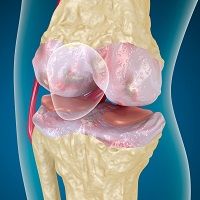Article
Gene Regulates Tissue Damage Severity in Rheumatoid Arthritis
Author(s):
Early diagnosis continues to be one of the biggest challenges associated with rheumatoid arthritis (RA); however, researchers have identified a genetic marker that can predict tissue damage severity that could lead to better treatments.

Early diagnosis continues to be one of the biggest challenges associated with rheumatoid arthritis (RA); however, researchers have identified a genetic marker that can predict tissue damage severity that could lead to better treatments.
Around 30% of patients with RA are unable to work within 10 years of onset, but joint damage can be reduced through early diagnosis and treatment. Lead researcher Gerry Wilson, PhD, and colleagues from University College Dublin (UCD) and The University of Sheffield discovered a gene responsible for tissue damage caused by the debilitating condition.
“Our findings provide a genetic marker that could be used to identify those RA patients who require more aggressive treatments or personalized medicine,” Wilson, a professor at the UCD School of Medicine and Medical Science, said in a news release.
The team examined DNA and biopsy samples from joints of over 1,000 patients with RA and discovered that the protein, C5orf30, regulates the degree of tissue damage. The gene is expressed in vertebrate genomes and appears to have central function in the organisms.
“Here, we report that C5orf30 encodes a 206-aa protein that is highly expressed in RA synovial fibroblasts (RASFs), a cell type implicated in causing joint damage,” the authors wrote in a report in the Proceedings of the National Academy of Sciences of the United States of America. “Importantly inhibition of C5orf30 increases the autoaggressive phenotype of RASFs in vitro and increases joint inflammation and damage in murine inflammatory arthritis.”
In addition, the researchers found that the gene is “a negative regulator of tissue breakdown modulating the autoaggressive phenotype that is characteristic of RASFs.” This means that it may become easier to provide personalized, effective treatments based on the genetic marker.
“These exciting findings will prompt us to further explore the role of this highly conserved protein that we know so little about, and its significance in human health disease,” said one of the authors Munitta Muthana, BSc, Hon, PhD, of The University of Sheffield.




